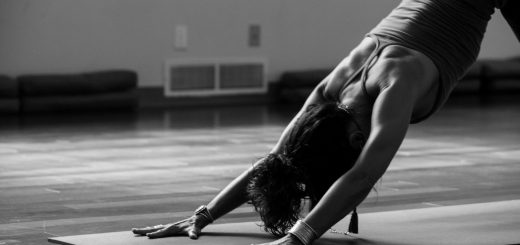Mindful Asanas: Aligning Body, Mind, and Spirit through Yoga

Before diving in, please note: This post is for informational purposes only. If you’d like to know more about how we approach topics, feel free to check out our friendly Disclaimer Page.
Hey there, amazing readers! 🖐️ Just a quick note: yes, we know there are a lot of ads here. Trust us, we get it—it’s not the prettiest look, but they help us keep this blog alive and kicking. Those pesky little ads cover the costs of all the behind-the-scenes magic, from hosting and tech stuff to creating content we hope you’ll love.
We’re committed to delivering quality posts, and your support (even just sticking around despite the ads) means everything to us. So, bear with us, and thanks for helping us keep the good vibes rolling. Now, on to the fun stuff! 😉
TRANSLATE BUTTON AT THE END OF THE ARTICLE
Overview
Mindful Asanas, also known as yoga poses, are a key component of the practice of yoga.
These physical postures help align the body, mind, and spirit, promoting a sense of balance and harmony within oneself.
By practicing mindful asanas, individuals can deepen their connection to their bodies and cultivate a greater awareness of their thoughts and emotions.
This article explores the concept of mindful asanas, their connection to the body, mind, and spirit, the benefits they offer, and techniques for incorporating mindfulness into your yoga practice.
What are Mindful Asanas?
Mindful asanas are specific physical postures practiced in yoga that require individuals to be fully present in the current moment.
These postures are performed with conscious awareness, focusing on the breath, sensations, and alignment of the body.
Unlike other forms of physical exercise, mindful asanas aim to not only strengthen and stretch the physical body but also promote mental and emotional well-being.
They offer an opportunity to bring the mind and body into harmony, creating a sense of unity within oneself.
The Connection between Body, Mind, and Spirit
In the practice of yoga, there is a deep understanding of the interconnection between the body, mind, and spirit.
The body is seen as a vessel for the mind and spirit, and any imbalances or disharmony in one aspect can affect the others.
Mindful asanas help bridge this connection by bringing attention to the physical sensations and movements of the body, while also calming and focusing the mind.
Through the practice of mindful asanas, individuals can cultivate a greater sense of self-awareness and promote a holistic sense of well-being.
How Yoga Can Help Achieve Mind-Body Alignment
Yoga, as a holistic practice, combines physical movement with breath control and mindfulness techniques.
This combination allows individuals to achieve mind-body alignment.
By engaging in mindful asanas, individuals can synchronize their breath with their movements, bringing the mind and body into a state of harmony.
This alignment helps reduce stress, increase body awareness, and promote a sense of calm and relaxation.
Regular practice of yoga can also enhance flexibility, strength, and balance, both physically and mentally.
Benefits of Practicing Mindful Asanas
The practice of mindful asanas offers a wide range of benefits for individuals of all ages and fitness levels.
Some of these benefits include:
Improved physical strength and flexibility: Mindful asanas help strengthen and stretch the muscles, improving overall physical strength and flexibility.
Enhanced body awareness: By focusing on the sensations and alignment of the body, individuals can develop a deeper understanding of their physical being and improve their overall body awareness.
Reduced stress and anxiety: Mindful asanas promote relaxation and help reduce stress and anxiety by calming the mind and activating the body’s relaxation response.
Improved posture and alignment: Regular practice of mindful asanas can improve overall posture and alignment, reducing the risk of musculoskeletal imbalances and injuries.
Increased mindfulness and presence: Mindful asanas require individuals to be fully present in the current moment, promoting mindfulness and enhancing the ability to stay focused and present in everyday life.
Enhanced emotional well-being: The practice of mindful asanas can help individuals cultivate a greater sense of balance, inner peace, and emotional well-being.
Exploring Different Types of Yoga Asanas
There are numerous types of yoga asanas that individuals can explore to align their body, mind, and spirit.
Some popular types of yoga asanas include:
Hatha Yoga: Hatha yoga focuses on physical postures and breath control, making it an ideal practice for beginners.
It emphasizes the balance between body and mind.
Vinyasa Yoga: Vinyasa yoga involves flowing movements linked with breath, creating a dynamic and fluid practice.
It builds strength, flexibility, and endurance.
Iyengar Yoga: Iyengar yoga emphasizes precision and alignment in each posture.
Props are often used to support the body, making it accessible for individuals of all abilities.
Ashtanga Yoga: Ashtanga yoga follows a specific sequence of postures, synchronized with breath, to create a vigorous and physically demanding practice.
Restorative Yoga: Restorative yoga focuses on relaxation and rejuvenation.
It involves gentle and supported postures held for extended periods, promoting deep relaxation and healing.
Kundalini Yoga: Kundalini yoga combines physical postures, breathwork, chanting, and meditation to activate the dormant spiritual energy within oneself.
Incorporating Mindfulness into Your Yoga Practice
To cultivate mindfulness in your yoga practice, consider the following techniques:
Set an intention: Before starting your practice, set an intention to be fully present and mindful throughout the session.
This will help guide your focus and keep you grounded.
Focus on the breath: Pay attention to the inhalation and exhalation during each pose.
Allow the breath to guide your movements and help anchor your mind in the present moment.
Notice physical sensations: Tune in to the sensations in your body as you move through each posture.
Observe any areas of tension or discomfort and adjust the pose accordingly.
Observe thoughts and emotions: Notice any thoughts or emotions that arise during your practice without judgment.
Acknowledge them and let them go, bringing your attention back to the present moment.
Practice non-attachment: Let go of expectations and judgments about your performance in each pose.
Instead, focus on the process and the experience of being in the present moment.
Techniques for Cultivating Mindfulness in Asanas
To deepen your mindfulness in asanas, try incorporating the following techniques:
Slow down: Practice each asana slowly and mindfully, paying attention to every movement and sensation.
This allows you to fully experience the pose and cultivate awareness.
Use visualizations: Visualize the energy flowing through your body as you move through each posture.
Imagine each movement creating balance and harmony within you.
Engage all the senses: Bring awareness to your senses during your practice.
Notice the feeling of the mat beneath your feet, the sound of your breath, and the scent in the air.
Practice gratitude: Express gratitude for your body and its abilities.
Focus on the positive aspects of your practice and celebrate the progress you make, no matter how small.
Integrate mindfulness breaks: Take short breaks during your practice to pause, close your eyes, and bring your attention to your breath.
This helps you reconnect with the present moment.
Tips for Proper Alignment in Yoga Poses
Proper alignment in yoga poses is essential to prevent injuries and get the most out of your practice.
Consider the following tips:
Listen to your body: Pay attention to how your body feels in each pose.
If you feel pain or discomfort, modify the pose or come out of it completely.
Honor your body’s limits and avoid pushing beyond them.
Engage the core: Activate your core muscles in each pose to support the spine and maintain stability.
This helps protect the lower back and promotes proper alignment.
Align the joints: In standing poses, ensure that the ankles, knees, and hips are aligned.
In seated poses, align the knees and ankles.
Proper alignment reduces strain on the joints and promotes stability.
Extend through the spine: Lengthen the spine in each pose, creating space between the vertebrae.
This helps maintain good posture and allows for proper energy flow throughout the body.
Use props: Props such as blocks, straps, and blankets can assist in achieving proper alignment.
They provide support and help individuals find the optimal position in each pose.
Enhancing Mind-Body Awareness through Breathwork
Breathwork is an integral part of yoga practice that can enhance mind-body awareness.
Consider the following breathwork techniques:
Deep belly breathing: Take slow, deep breaths, expanding your belly with each inhalation and allowing it to soften as you exhale.
This deep breathing promotes relaxation and activates the body’s relaxation response.
Ujjayi breath: Ujjayi breath involves inhaling and exhaling through the nose while gently constricting the back of the throat.
This creates a soft, ocean-like sound that helps calm the mind and deepen the breath.
Alternate nostril breathing: In this technique, use your right thumb to close your right nostril and inhale deeply through the left nostril.
Close the left nostril with your right ring finger, exhale through the right nostril, then inhale through the right nostril.
Close the right nostril again and exhale through the left nostril.
This practice balances the energy flow in the body and calms the mind.
Breath retention: As you become more comfortable with breathwork, explore breath retention.
This involves holding the breath for a few seconds after inhalation or exhalation, allowing for deeper connection to the present moment and the sensations in the body.
Deepening the Spiritual Experience in Asanas
Mindful asanas can also provide a platform for deepening the spiritual experience within yoga practice.
Consider the following techniques:
Create a sacred space: Set up a dedicated space for your yoga practice that feels sacred and peaceful.
Surround yourself with objects or symbols that hold spiritual significance for you.
Incorporate affirmations or mantras: Repeat affirmations or mantras silently or out loud during your practice.
Choose words or phrases that resonate with your spiritual beliefs and intentions.
Visualize light or energy: During your practice, visualize a gentle light or energy flowing through your body.
Imagine this light or energy connecting you to a higher power or source of spiritual guidance.
Explore meditation: After completing your asana practice, spend a few minutes in meditation.
This allows you to deepen your connection to the spiritual aspects of yoga and cultivate a sense of peace and stillness.
Connect with nature: If possible, practice yoga asanas outdoors in nature.
This can enhance the spiritual experience by immersing you in the natural beauty and energy of the surroundings.
Nurturing Self-Compassion and Acceptance in Yoga
Self-compassion and acceptance are important aspects of yoga practice.
Consider the following tips:
Practice non-judgment: Let go of judgment and criticism towards yourself and your practice.
Embrace the concept of self-acceptance and celebrate your uniqueness.
Be patient: Understand that progress in yoga takes time.
Be patient with yourself and avoid comparing your practice to others.
Each individual’s journey is unique.
Listen to your body: Honor your body’s needs and limitations.
Respect any signals of pain or discomfort and modify or skip poses as needed.
Trust your intuition and practice self-care.
Cultivate self-compassion: Treat yourself with kindness, understanding, and forgiveness.
Remember that yoga is a personal journey, and each step you take is an accomplishment.
Celebrate small victories: Acknowledge and celebrate your progress, no matter how small.
Recognize the improvements you make in strength, flexibility, and mind-body connection.
Conclusion
Mindful asanas provide a powerful tool for aligning the body, mind, and spirit through the practice of yoga.
By incorporating mindfulness, proper alignment, breathwork, and a focus on self-compassion, individuals can experience the numerous benefits of this holistic practice.
Whether it’s improving physical strength, reducing stress, deepening spiritual connections, or cultivating self-awareness, mindful asanas offer a pathway to overall well-being.
Embrace the practice of mindful asanas and unlock the transformative potential of aligning your body, mind, and spirit through yoga.

The Enlightenment Journey is a remarkable collection of writings authored by a distinguished group of experts in the fields of spirituality, new age, and esoteric knowledge.
This anthology features a diverse assembly of well-experienced authors who bring their profound insights and credible perspectives to the forefront.
Each contributor possesses a wealth of knowledge and wisdom, making them authorities in their respective domains.
Together, they offer readers a transformative journey into the realms of spiritual growth, self-discovery, and esoteric enlightenment.
The Enlightenment Journey is a testament to the collective expertise of these luminaries, providing readers with a rich tapestry of ideas and information to illuminate their spiritual path.
Our Diverse Expertise 🌟
While our primary focus is on spirituality and esotericism, we are equally passionate about exploring a wide range of other topics and niches 🌍📚. Our experienced team is dedicated to delivering high-quality, informative content across various subjects ✨.
To ensure we provide the most accurate and valuable insights, we collaborate with trusted experts in their respective domains 🧑🏫👩🏫. This allows us to offer well-rounded perspectives and knowledge to our readers.
Our blog originally focused on spirituality and metaphysics, but we’ve since expanded to cover a wide range of niches. Don’t worry—we continue to publish a lot of articles on spirituality! Frequently visit our blog to explore our diverse content and stay tuned for more insightful reads.





